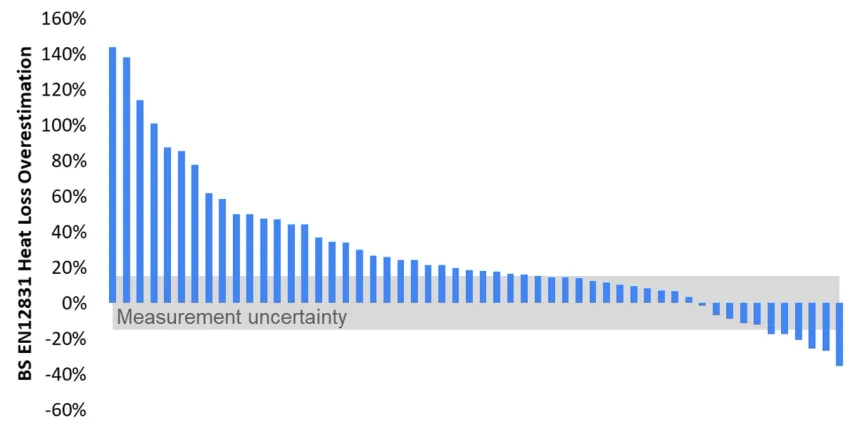Accurate Heat Loss Measurement is Vital to Heat Pump Sizing
New research shows that around 70% of homes could have the wrong size of heat pump installed. The result can be higher capital costs and poorer efficiency leading to higher running costs in the long term – the opposite of what is intended.
The research, carried out by Elmhurst Energy, Build Test Solutions, and Veritherm, suggests that there are significant opportunities to increase the likelihood and decrease the cost of meeting the government’s target to install 600,000 heat pump by 2028, if the industry addresses the accuracy of heat loss calculations* (*BS EN12831).
Richard Jack, technical director at Build Test Solutions said: “The industry needs to take a more accurate approach to sizing using heat loss measurement. Before any heat pump is installed, heat loss measurement is needed to ensure the correct size unit is specified in line with the property’s requirements.
“The performance gap between the calculated and actual heat loss calculations will have significant implications for residents if we don’t make changes – with the risk of needlessly higher costs and cold homes.”
Understanding the performance gap
The research found that in a study across more than 50 homes the average absolute difference in heat loss between the calculated and measured heat loss was 35 per cent. With the calculated heat loss only matching the measurement for 30 per cent of homes, i.e. that it was wrong for 70 per cent. There was a significant bias towards overestimating the heat loss, with 59 per cent of houses having an overestimate. There were also houses where the calculated heat loss was too low, however, these would be at risk of having a heat pump installed that isn’t big enough to heat the house.
The problem is that an oversized heat pump incurs higher capital costs, of around 10 per cent on average, alongside higher maintenance costs and lower running efficiency.
For those that have an undersized heat pump, the risk is that the home is not warm enough during the coldest periods. This often leads to an increase in the use of less efficient, more expensive heat methods like a fan or oil heater.

Heat loss measurement vs calculation
Heat loss measurements and calculations both seek to establish the same thing: the heat loss rate from the building and therefore the heat required to keep the building warm. But they use two different methods to establish this rate.
Calculations sum the heat loss from each part of the building, but the calculations are based upon assumptions of thermal performance which are known to be prone to inaccuracy. Heat loss measurements do just that, they measure the heat loss from a particular building to ensure an accurate assessment.
Making measurement mainstream
“Measuring the thermal performance of a home should be the first step in any consumer heat pump journey,” said Richard. “Measurement helps engage residents, leading to higher heat pump uptake and trust, and reduces risk when making this investment.”
Elmhurst Energy, Build Test Solutions, and Veritherm suggest that both industry standards and software tools should be updated to recognise the role of measured heat loss as part of the heat pump design process, sizing and specifying.
Chris Ricketts, Head of Consultancy at Elmhurst Energy adds: “Heat loss measurements provide a more accurate method to determine the overall heat demand of a building, which can feed down to the design process and improve efficiencies.
“It is a service that installers can integrate within their offering, using software tools to capture and present the data. Residents see value in this information, and the savings that can be achieved through doing this accurately more than covers the costs.”
Tom Fenton, CEO at Veritherm said: “If the industry does not work together, residents will be forced to pay unnecessary costs, and we’ll never make heat pumps a trusted low carbon heating alternative for our homes.”
Get More Information
Read the full report and find further resources from Elmhurst Energy, Build Test Solutions, and Veritherm.
FIND OUT MORE
